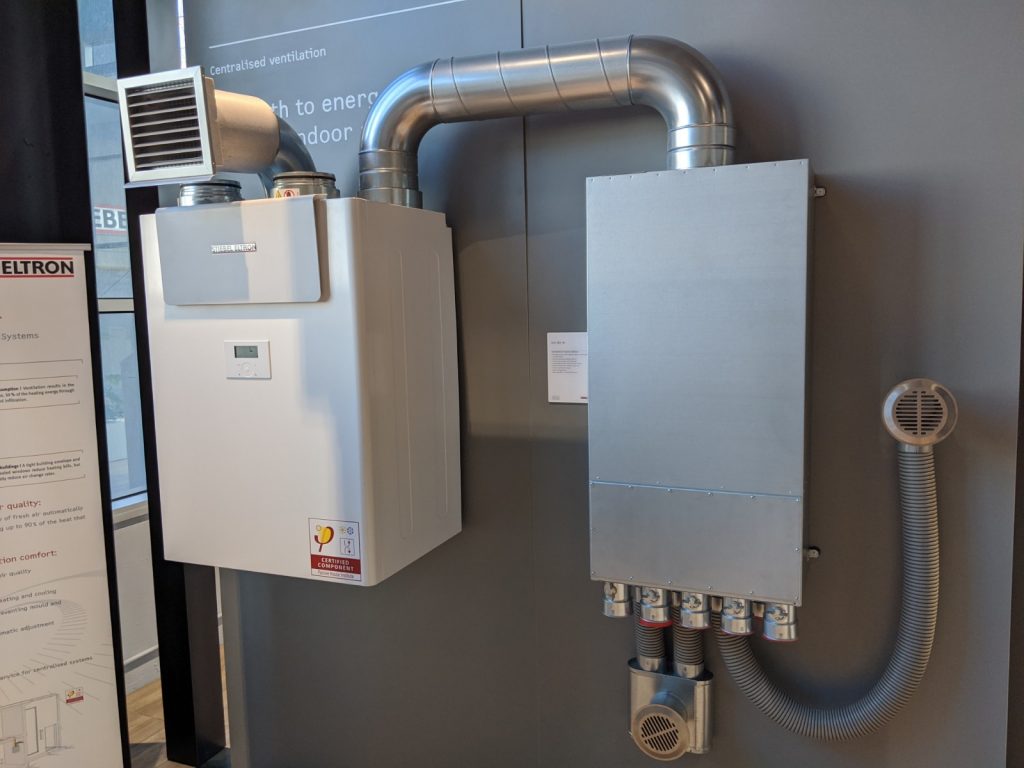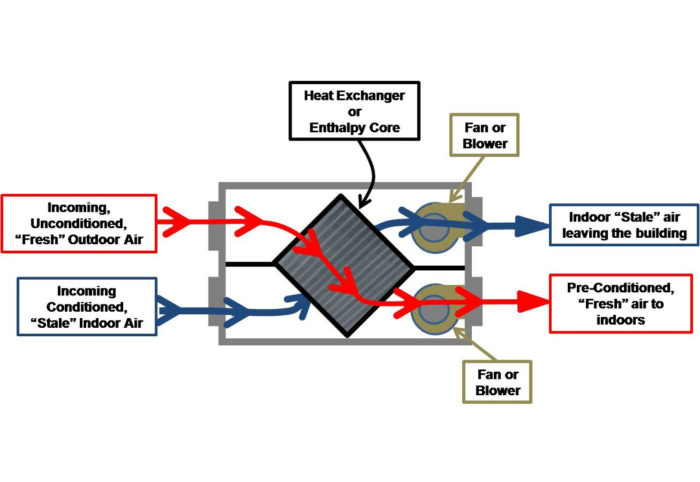Checklist: What to Consider Before Buying HRV
Wiki Article
The All-Inclusive Overview to the Uses of Heat Recovery Ventilation in Modern Buildings
Heat Recovery Ventilation (HRV) systems represent a substantial development in constructing innovation (HRV Heat Recovery Ventilation). They give a technique for trading stagnant indoor air with fresh exterior air while lessening energy loss. This technique not only enhances interior air quality yet additionally adds to power effectiveness in both household and industrial structures. Understanding the different applications and advantages of HRV can expose its important function in modern-day style and sustainability initiatives. The implications of this modern technology are worth checking out furtherComprehending Heat Recovery Ventilation Equipments

Lots of modern structures focus on power efficiency, understanding warm recovery ventilation (HRV) systems is important for enhancing interior air high quality and minimizing energy consumption. HRV systems work by moving heat from stale indoor air to incoming fresh air, efficiently preserving comfy indoor temperatures while lessening power loss. These systems contain a warmth exchanger, followers, and ductwork that promote the circulation of air. During winter months, HRV devices capture and reuse heat from the outgoing air, while in summer, they can help cool incoming air. By continuously trading air, HRV systems likewise minimize humidity and the concentration of indoor contaminants. Appropriate installation and maintenance of HRV systems are important for their efficiency and effectiveness in improving overall building efficiency and comfort.
Advantages of Heat Recovery Ventilation
Heat recovery ventilation systems use many benefits that enhance both power effectiveness and indoor air quality in modern-day buildings. By capturing and recycling power from exhaust air, these systems considerably decrease heating & cooling prices, leading to lower power usage. Additionally, they keep a consistent flow of fresh exterior air, minimizing the danger of indoor air toxins and allergens. This constant exchange assists regulate humidity degrees, avoiding mold and mildew growth and making certain a much healthier living environment. Furthermore, HRV systems add to sustainability objectives by lowering general carbon impacts. Their ability to enhance ventilation without giving up thermal comfort makes them a beneficial addition to modern building layout, advertising both economic and eco-friendly benefits.Applications of HRV in Residential Buildings
As house owners significantly prioritize power efficiency and interior air quality, the applications of warm recuperation ventilation (HRV) systems in household buildings have come to be much more prevalent. HRV systems are especially advantageous in snugly sealed homes, where preserving fresh air flow is necessary for protecting against dampness build-up and interior contaminants. They properly move warm from outgoing stale air to incoming fresh air, minimizing energy costs related to cooling and heating. In addition, HRVs can boost convenience degrees by regulating humidity and temperature. They are also adaptable for different residential designs, consisting of single-family homes and multi-unit buildings. In general, integrating HRV systems supports sustainable living practices while guaranteeing a healthier indoor environment for residents.HRV in Commercial and Industrial Settings
In commercial and commercial setups, the execution of warmth recovery ventilation (HRV) systems has actually visit here come to be progressively important for maximizing energy performance and keeping air top quality. These systems successfully move warm from exhaust air to incoming fresh air, reducing the demand for added home heating or air conditioning. This not only lowers power expenses however also adds to sustainability efforts. Industries such as manufacturing, warehousing, and office complex profit considerably from HRV systems, as they help manage temperature level and humidity degrees, making sure a comfortable and effective atmosphere. Additionally, HRV systems aid in getting rid of pollutants and excess moisture, boosting indoor air top quality. As guidelines around air top quality end up being more stringent, the fostering of HRV modern technology is likely to expand, making it a critical part of modern-day business and industrial framework.Future Patterns in Heat Recovery Ventilation Technology

Regularly Asked Inquiries
ContinuedHow Does Heat Recovery Ventilation Impact Indoor Air Quality?
Heat recovery ventilation significantly enhances indoor air quality by continuously trading stagnant interior air with fresh outside air while recovering energy. This procedure minimizes contaminants, preserves perfect humidity degrees, and assures a healthier environment for occupants.Can HRV Equipments Be Mounted in Existing Structures?
HRV systems can undoubtedly be set up in existing buildings. Retrofitting might call for alterations to ductwork and ventilation formats, but it considerably boosts energy efficiency and interior air high quality, making it a sensible option for older structures.What Upkeep Is Required for HRV Equipments?

Exist Details Climates Where HRV Is More Reliable?
Heat recovery ventilation systems are especially efficient in environments with considerable temperature differences in between seasons. These systems optimize energy efficiency by recouping heat from exhaust air, making them excellent for both chilly and reasonably cozy atmospheres.Just How Do HRV Systems Affect Energy Bills?

Report this wiki page